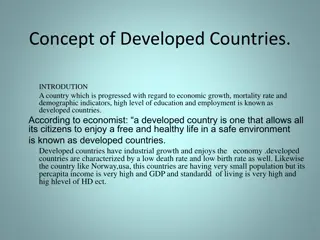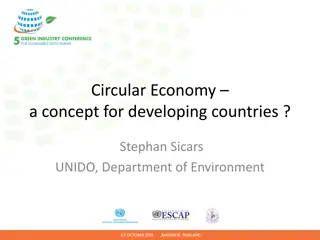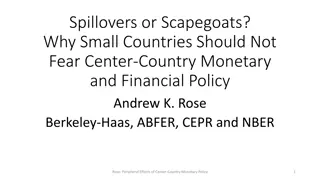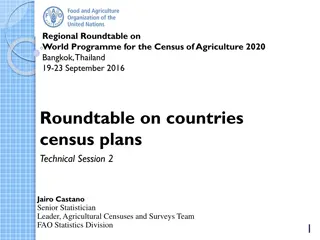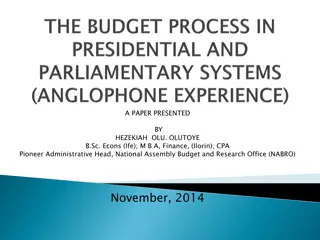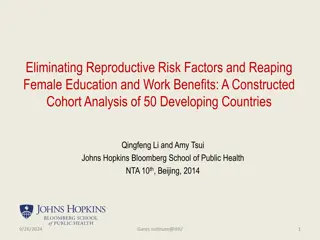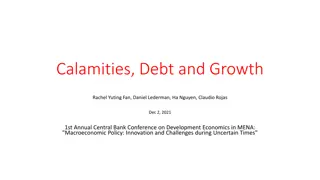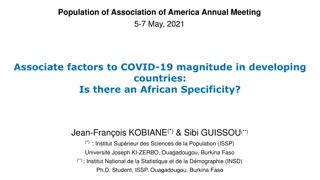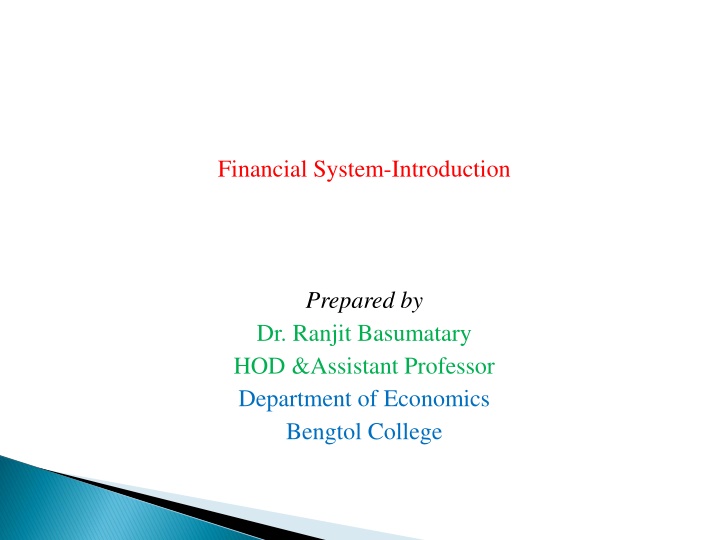
Overview of Financial Systems in Developing Countries
A financial system comprises formal and informal sectors that facilitate fund transfers and allocations efficiently. This system includes various financial institutions, markets, instruments, and services. In developing countries, there is a co-existence of formal and informal financial sectors known as financial dualism. The formal sector is regulated and caters to modern economy needs, while the informal sector deals with traditional and rural economy spheres. Financial institutions and markets play crucial roles in mobilizing savings and facilitating fund allocation.
Download Presentation

Please find below an Image/Link to download the presentation.
The content on the website is provided AS IS for your information and personal use only. It may not be sold, licensed, or shared on other websites without obtaining consent from the author. If you encounter any issues during the download, it is possible that the publisher has removed the file from their server.
You are allowed to download the files provided on this website for personal or commercial use, subject to the condition that they are used lawfully. All files are the property of their respective owners.
The content on the website is provided AS IS for your information and personal use only. It may not be sold, licensed, or shared on other websites without obtaining consent from the author.
E N D
Presentation Transcript
Financial System-Introduction Prepared by Dr. Ranjit Basumatary HOD &Assistant Professor Department of Economics Bengtol College
A financial system is a complex, well-integrated set of sub-systems of financial institutions, markets, instruments and services which facilitates the transfers and allocation of funds, efficiently and effectively. Formal and Informal Financial Systems: The financial systems of most of the developing countries are characterised by the co-existence and co-operation between the formal and informal financial sectors. This co-existence of two sectors is commonly referred to as Financial dualism . The formal financial sector is characterised by the presence of an organized, institutional and regulated system which caters to the financial needs of the modern spheres of economy. The informal financial sector is characterised by the presence of unorganised, non-institutional, and non-regulated system dealing with the traditional and rural spheres of the economy.
The Indian financial system can also broadly classified into formal (organized) and informal (unorganised) financial system. The formal financial system comes under the purview of the Ministry of Finance (MOF), Reserve Bank of India (RBI), Securities and Exchange Board of India (SEBI), and other regulatory bodies. The informal financial system consists of: Individual money lenders such as neighbours, relatives, landlords, traders and so on. (ii) Groups of persons operating as funds , or associations . These groups function under a system of their own rules. They use names such as fixed fund , association , saving club , and so on. (iii) Partnership firms consisting of local brokers, pawnbrokers, and non-bank financial intermediaries such as finance, investment, and chit-fund companies. (i)
(i) Financial institutions: Financial institutions are intermediaries that mobilize savings and facilitates the allocation of funds in an efficient manner. Financial institutions can be classified as- Banking and non-banking financial institutions: Banking institutions are creators of credit while non-banking financial institutions are purveyors of credit. Liabilities of the banks are part of the money supply, this may not be true of non-banking financial institutions. In India non-banking financial institutions are like HFCs, NBFCs, DFIs. Term-finance institutions like IDBI, IFCI, ICICI, SIDBI Specialised finance institutions like EXIM, TFCI, NHB, IDFC, NABARD, ICICI Venture Investment institutions in the business of mutual fund like UTI, Public Sector and Private sector Mutual Funds and insurance activity like LIC, GIC and is subsidiaries. State-level financial institutions: These are owned and managed by the state government such as SFCs, SIDCs
(ii) Financial Markets: Financial markets are a mechanism enabling participants to deal in financial claims. Financial markets also provide a facility in which their demand and requirement interact to set a price for such claims. In India, the main organised financial markets are money market and capital market. The first is a market for short term securities while the second is a market for long term securities. It can also be classified as primary market and secondary market. The primary market deals in new issues while the secondary market is meant for trading in outstanding or existing securities. Secondary market: OTC and Exchange Traded Market. In OTC market spot trades are negotiated and traded for immediate delivery and payment while in exchange traded market trading takes place over a trading cycle in stock exchanges.
(iii) Financial Instruments: Financial instruments is a claim against a person or an institutions for the payment at a future date a sum of money or a periodic payment in the form of interest or dividend. Financial securities: Primary securities-equity shares and debentures; Secondary securities-Bank deposits, Mutual Fund units, Insurance Policies. (iv) Financial services: Financial intermediaries provide key financial services such as merchant banking, leasing, hire purchase, credit rating, and son. Financial services rendered by the financial intermediaries bridge the gap bridge the gap between lack of knowledge on the part of investors and increasing sophistication of financial instruments and markets. Financial services are vital for creation of firms, industrial expansion and economic growth.
The End Thank You The End Thank You





